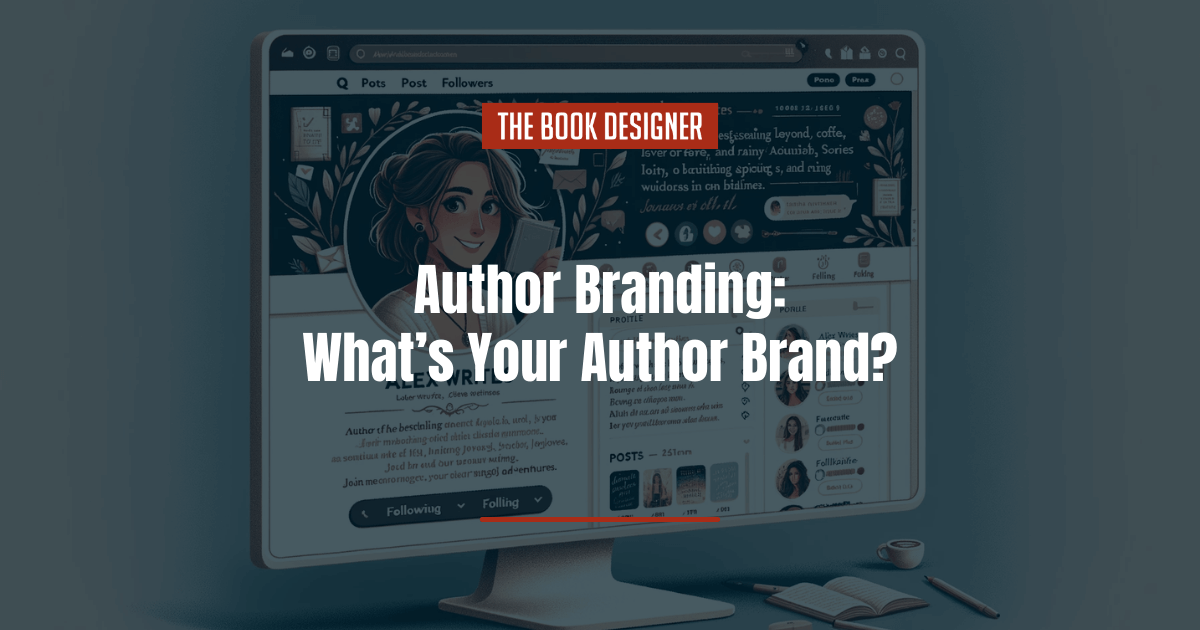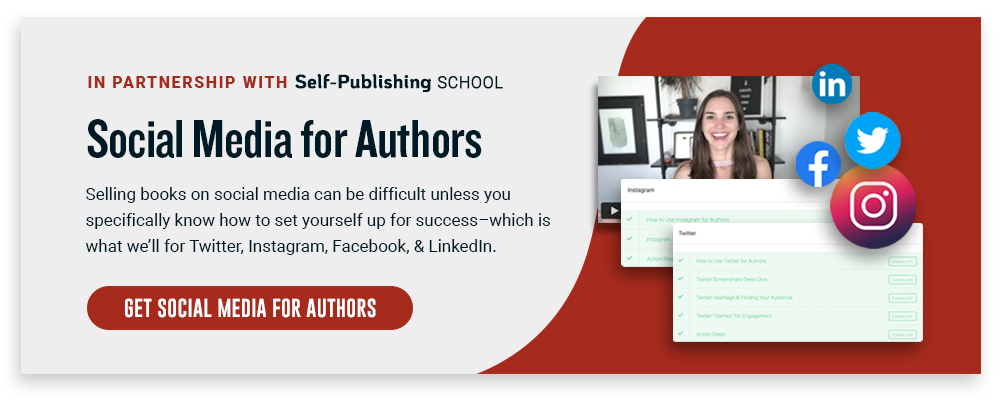Creating an author brand is akin to tending a garden in which each plant represents different facets of your identity as an author. Careful cultivation—choosing which plants to nurture, deciding on their arrangement, and determining how to present them—can transform a scattered plot of land into a coherent, inviting garden that reflects the gardener’s vision and appeals to specific visitors.
For authors, this means weaving together their unique selling points, such as genre specializations, writing style, and personal values, into a cohesive brand that resonates with their target readership. This introductory guide will explore the tools and strategies necessary to cultivate an author brand that not only stands out in the crowded marketplace but also fosters a deep, lasting connection with readers.
Here’s what you need to know about author branding:
What is an Author Brand?
Essentially, author brands are built on top of your personal brand. It’s what people think of when they hear your name; it’s a collection of impressions people have of you. A number of elements help create those impressions, including your:
- Books—both what they look like and what’s in them
- Online interaction with readers and others
- Social media contributions
- Website
- In-person interactions with readers and others
- Personality
Your author brand is who you are—not who you want to be or who you want readers to think you are. But it also goes beyond who you are to include what you stand for, how you handle and present yourself, and what you do.
Why is Having an Author Brand So Important?
Having an author brand is important in today’s publishing landscape for several reasons. It serves as a key differentiator in a highly competitive market, where millions of books vie for attention.
An author brand makes you stand out, enabling your target audience to recognize and remember you amidst a plethora of options. This differentiation is not just about being noticed; it’s about building reader loyalty. By establishing a clear expectation of the kinds of stories, quality, and genres you write, an author brand builds trust among your readers. They become more likely to seek out your books in the future, knowing what to expect.
Moreover, an established author brand streamlines the marketing and promotion of your books. It offers a cohesive identity across various platforms, including your website, social media profiles, book covers, and promotional materials. This coherence makes your marketing efforts more recognizable and effective, enhancing your visibility and appeal to your target audience.
The benefits of a strong brand extend to cross-selling opportunities as well. Readers invested in your brand are more inclined to explore your other works, even across different series or genres. This not only increases your sales but also expands your readership.
A strong author brand can unlock professional opportunities beyond book sales. It may lead to speaking engagements, workshops, consulting roles, or even adaptations of your work into other media.
Your brand allows you to forge a personal connection with your audience by sharing your unique voice, values, and story. This connection can significantly boost reader engagement and loyalty, as readers feel a closer bond with you as an author.
Ultimately, an author brand is foundational for long-term success and sustainability in your writing career. It helps you maintain relevance and continue to attract readers, publishers, and various opportunities over time. Building a brand isn’t just about immediate book sales. It’s about creating a lasting impression that nurtures engagement, loyalty, and career growth.
Common Author Branding Mistakes
Before we dive into how to create your author brand, let’s look at some common mistakes authors make in the branding arena. Knowing these mistakes ahead of time can help prevent you from making them!
Creating a Brand for Everyone
Your books likely don’t appeal to everyone, so why would your brand? It’s important that your brand speaks to your particular audience—the potential readers of your books.
Not Knowing Your Target Audience
Who are your readers? What are their other likes and dislikes? Where do they hang out online and offline? If you can’t answer these questions, then you don’t know your target audience. And if you don’t know your target audience, you won’t be able to create a brand that appeals to them.
Generic Branding
Generic branding is almost worse than not having a brand at all. Your brand needs to be more than just “romance author” or “sci-fi author.” You’ll want to figure out what makes you or your books unique so that you can set yourself apart.
Not Knowing Your USP
Have you ever heard the term USP? It stands for Unique Selling Proposition. It’s the thing that makes you and your books unique from others in your genre. If you don’t know your USP, you won’t be able to set yourself apart from other authors in your genre.
How to Build Your Authentic Author Brand
Building an author brand doesn’t have to be complicated. You just need to know where to start. Below, you’ll find all of the steps necessary for creating your authentic author brand.
Who Are You?
This is one of the first questions you should ask yourself when creating your author brand. Who you are as an author is the basis of your brand. So take some time to write that information down: what you write, how you write, your philosophy when it comes to books and writing, etc.
Define Your Expertise
Your author expertise is a key part of your brand. What are you an expert at? How does that tie into your writing? For example, if your expertise is in forensic science and you write crime novels, then your expertise could be a very important aspect of your author brand. Or maybe you’ve founded a handful of startups and write books about productivity or business. Again, your expertise is key to creating a relationship with your readers.
Think about how your expertise—whether that expertise comes from formal education, experience, or a hobby you’re passionate about—can tie into your writing. Then make it part of your author brand.
Write a Brand Promise
Your brand promise is what you deliver to your readers. Your brand promise isn’t necessarily something you define, though. It’s defined by your actions and the books you produce. That said, having an idea of what you want your brand promise to be can help you take action in alignment with that promise.
Write a Compelling Author Bio
Your author bio tells your readers who you are and is a vital part of your author brand. Your bio will be used on things like your Amazon Author Central page as well as on your books. Take some time to craft a bio that expresses your brand as you want to portray it to the world.
Understand Your “Competition”
I use “competition” in quotes here because authors are in a unique position when it comes to competitors: the vast majority of readers read books from more than one author. They purchase books regularly, with the most avid readers purchasing multiple books per month. Other authors are your “competition,” but readers aren’t going to shun your books just because they also like another author. In other words, there are plenty of readers to go around.
That said, you still need to understand what other authors in your genre are writing and what their brands are. How are they setting themselves apart within the genre? What are their unique selling propositions? How do they engage with their readers? Answer these questions and then figure out how your author brand is different from theirs.
Find a Unique Brand Voice
Your brand voice and your author voice are not necessarily the same thing, but they should complement each other. Your author voice is the voice you use within your books. Depending on your genre, that may or may not be a conversational tone that would work when talking with readers. Your brand voice should be one that’s accessible and inviting to your readers outside of your books.
Build Your Visual Identity
Your visual identity is often the first thing authors think of when they think about “branding,” but it’s really the last thing you want to focus on. Why? Because it’s built based on all of the other steps you’ve taken above to define your author brand.
Your visual identity includes everything from your author photo to the style of posts you share in your social media marketing. It can also include your book covers and other promotional materials.
Your visual identity needs to make sense for both your books and your author brand. Think about what styles of content your readers will expect from someone writing in your genre. For example, if you write true crime nonfiction, using a bunch of soft, pink imagery probably isn’t going to resonate.
Visual language is just as important as written language when it comes to your author brand and marketing efforts. On some platforms, like social media, visuals are arguably more important. They’re the first thing your potential readers will see, and the thing that will draw them in to learn more.
Here are some best practices for creating a visual identity for your author brand:
- Decide on a color palette for all of your visuals. This should include at least half a dozen colors that work well together to give you some options when creating things like social media images. Make sure the color palette makes sense for your genre.
- Decide on which typefaces you’ll use for your brand. These might be the same typefaces you use on your book covers, or similar ones that are more suitable for other marketing purposes. It’s best to stick to 2-4 typefaces that work well together (though you likely won’t use all 4 on a single image).
- Figure out what types of photos or illustrations you’ll use. Is there a particular filter you’ll use for all of your photos? Is there a particular illustrator you want to work with for any graphic needs? Define these things up front and then stick to them.
- Consider designing a logo for yourself or, if you use one, for your publishing imprint. You can use this logo both on your books and on your website or social media. You can use sites like Canva to design your own or hire a graphic designer to create one.
- Make sure you use the same author photo on all of your social media accounts so that readers can immediately identify that they’ve found the right account.
Your visual identity doesn’t have to be complicated. But it does need to be consistent!
Implement Your Author Brand Everywhere
Once you’ve defined your author brand, you’ll want to make sure that you implement it everywhere! This can feel overwhelming if you’ve already been an author for a long time, so it helps to come up with a plan.
First, make a list of everywhere you show up as an author. This could include:
- Social media
- TikTok
- Twitter/X
- Goodreads
- Professional organizations
- Online forums
- Your author website
- Your Amazon Author Central page
- Your book description pages
- Your books
- Promotional materials like flyers or bookmarks
- Business cards
Once you have your list, prioritize what you’ll update first. For example, if you still have 100 business cards or promotional bookmarks, you may want to put them low on your list and use up what you have before rebranding them.
Then, set aside time each week (or each day) to update at least one of the items on your list. For example, you might take a day to update all of your social media profile images and bios, and create new templates for your posts. Then on another day you go through all of your professional organization profiles to make the updates.
Author Brand Examples
There are some amazing author brands out there that you can use for inspiration. Most authors focus their branding on their author website, but some also carry it over to their social media, particularly in things like profile photos and header images. Here are a few to check out:
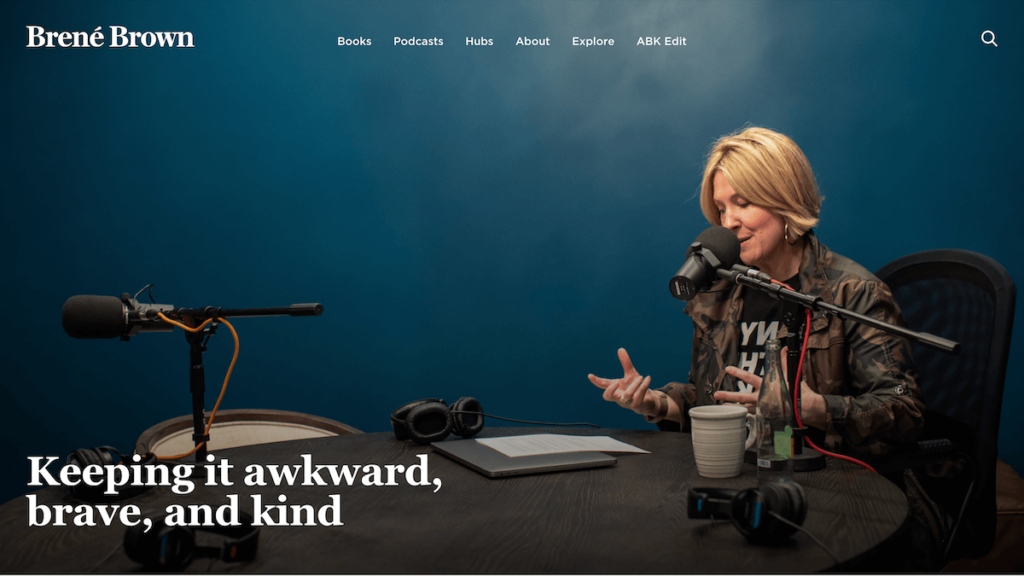
Brené Brown’s website uses shades of blue to create a very calming aesthetic, which fits perfectly with the subjects of her books.
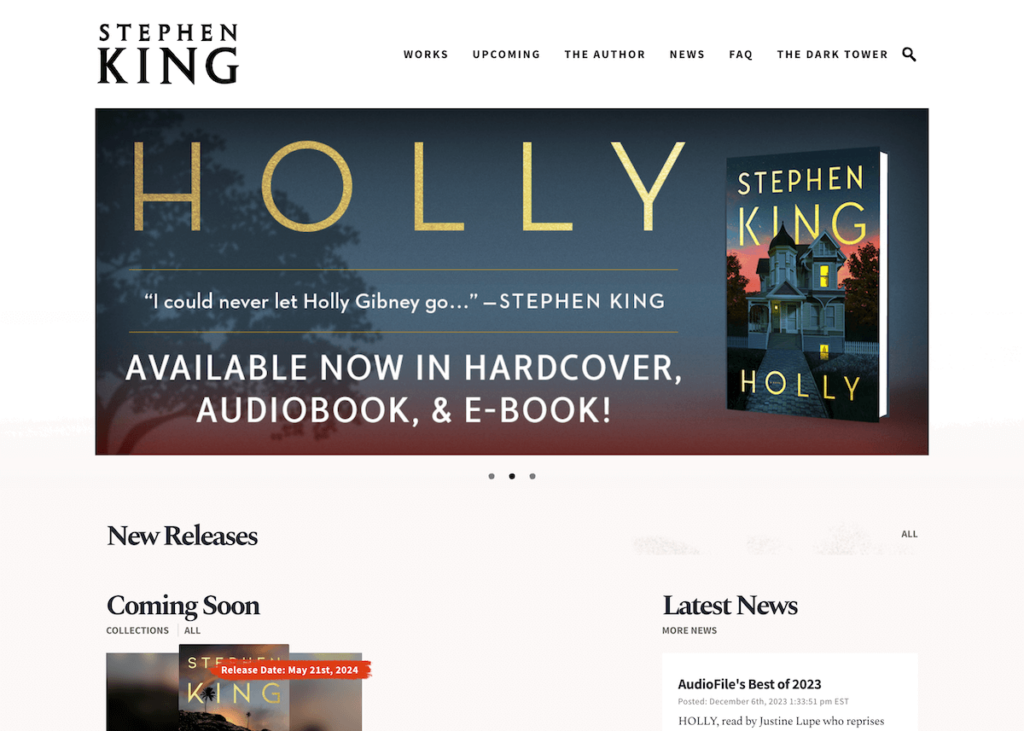
Stephen King’s website is surprisingly minimalist considering the complexity of his books. But it puts the focus squarely on the book covers and related imagery, which is a smart move.
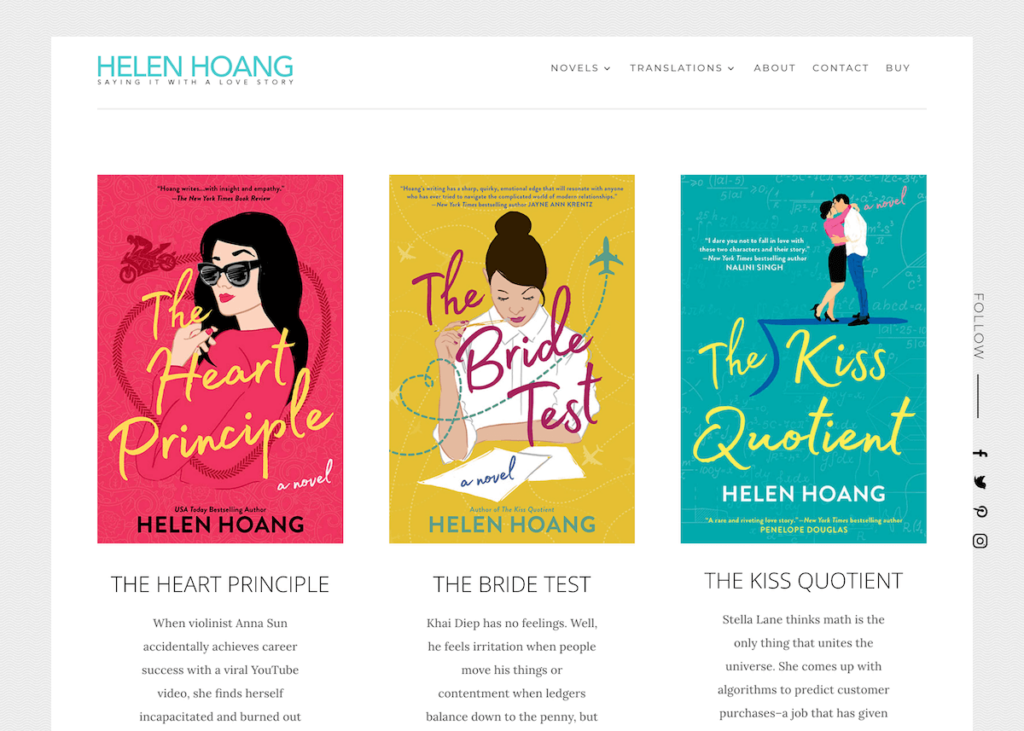
Helen Hoang’s book covers use the same basic layouts and typefaces, only switching up the illustrations and color palettes. Her website is simple, allowing the covers to steal center stage.
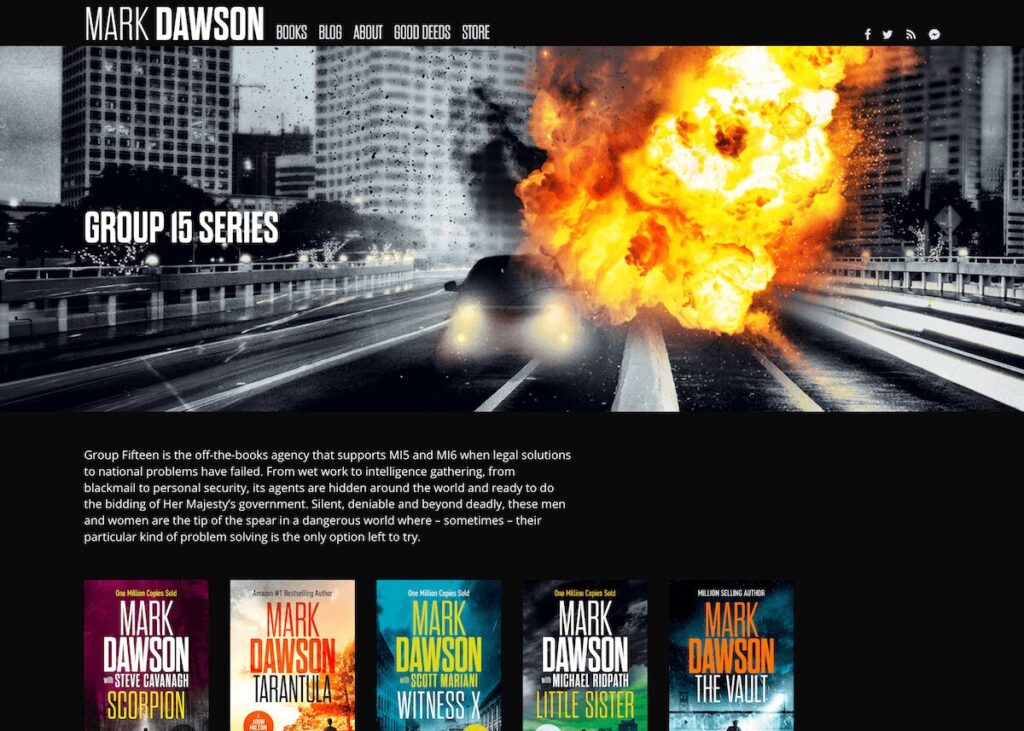
Mark Dawson uses a different header image for each of his book series, giving them their own flavor while maintaining his author brand on the rest of the website.
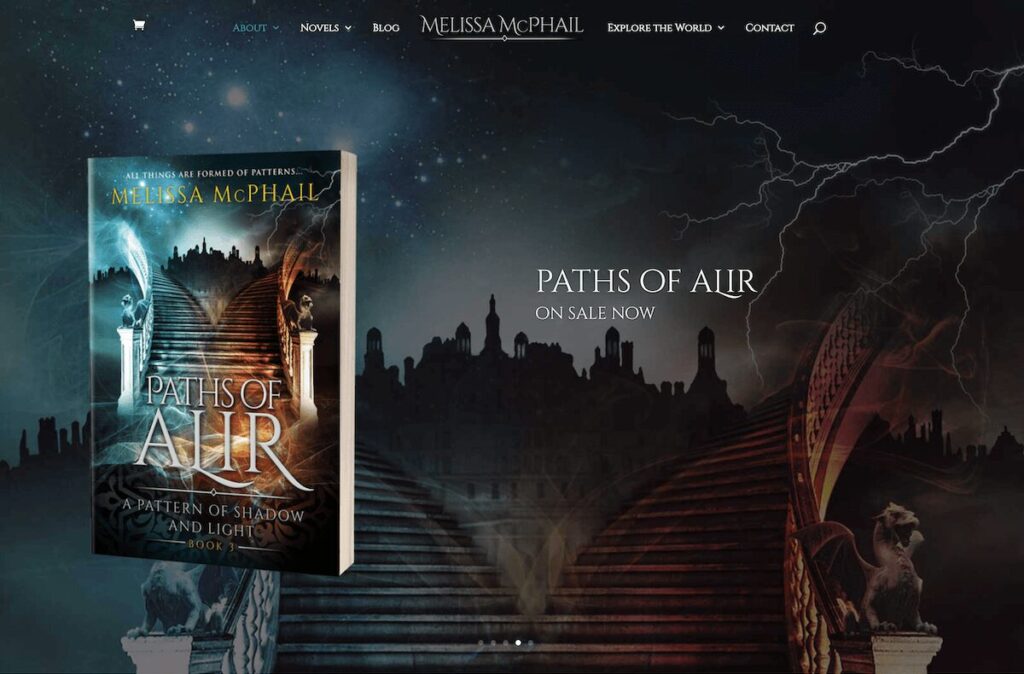
Melissa McPhail’s website uses an image carousel for the hero images, featuring her individual books. Using the same typography between the book cover and website reinforces her brand across mediums.

Lorenzo Gomez uses bright yellow combined with a black-and-white portrait to create visual interest.
Final Thoughts
As you venture forward, bear in mind that your author brand is a living, evolving entity. It will grow and change as you do, adapting to new trends, audience preferences, and your own creative journey.
The key is to remain true to the core elements that define you while also embracing opportunities for growth and exploration. By doing so, you’ll not only build a brand that stands out in the vast garden of authors but also create a sanctuary where readers feel seen, understood, and eager to return.
Embrace the process, and watch as your author brand flourishes into a vibrant testament to your unique place in the world of storytelling.


